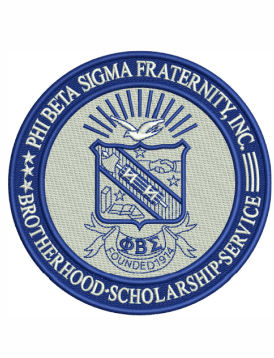Jan 25, 2024
Embroidery has been an age-old craft that seamlessly blends creativity and precision. With the advent of technology, this traditional art form has undergone a digital revolution, introducing Embroidery PES files to the repertoire of embroiderers and designers worldwide. Let's delve into the fascinating world of embroidery and explore the significance of PES files in bringing designs to life.
Understanding PES Files:
At the heart of machine embroidery lies the PES file format, which stands for Pattern for Embroidery Sewing machines, is a file format specifically designed for Brother embroidery machines. These files contain information about stitching patterns, colors, and other details that guide the machine in creating intricate designs on fabric PES files are a vital component in the digitization of embroidery, bringing a new level of efficiency and versatility to this timeless craft. PES stands for "Program to Embroidery Stitch," and it is a proprietary format specifically designed for Brother machines.
Unleashing Creativity with PES Files
The versatility of PES files empowers embroiderers to explore a myriad of designs. Whether you are embellishing garments, personalizing accessories, or creating intricate home decor items, PES files provide the roadmap for your embroidery machine to follow. From simple monograms to complex and detailed designs, the possibilities are virtually endless.
Versatility and Compatibility:
One of the key advantages of PES files is their compatibility with a wide range of embroidery machines, especially those manufactured by Brother. This universality allows users to share and exchange designs seamlessly, fostering a collaborative and creative community. Whether you are a hobbyist or a professional, the PES file format opens up a world of possibilities for creating stunning embroidered masterpieces. Additionally, PES files are widely available online, allowing crafters to explore and download a plethora of designs to suit their preferences.
Digitizing Designs:
Embroidery PES files are the bridge between digital design and tangible art. Designers can use specialized software to convert their artistic visions into PES files, providing precise instructions for the embroidery machine. This digitization process allows for intricate detailing, color variations, and complex patterns that may not be achievable through manual embroidery.
Ease of Editing:
PES files offer a level of flexibility that traditional embroidery may lack. Designers can easily edit and tweak their designs on a computer before transferring them to the embroidery machine. This ease of editing allows for quick adjustments, experimentation, and the creation of customized designs tailored to specific preferences.
Personalization and Customization:
Whether you're embellishing clothing, home decor, or accessories, PES files enable a high degree of personalization. From monograms and logos to intricate patterns and decorative elements, the possibilities are vast. The ability to customize designs ensures that each embroidered piece carries a unique touch, making it a one-of-a-kind creation.
Embracing the Future of Embroidery:
As technology continues to advance, so does the world of embroidery. PES files represent a significant step forward, combining the rich history of embroidery with the precision of digital technology. This harmonious blend allows artisans to embrace the future of embroidery while staying true to the timeless beauty of this age-old craft.
In conclusion, Embroidery PES files are the digital threads that weave together the past and the future of embroidery. As designers and enthusiasts continue to explore the vast potential of this file format, the artistry of embroidery evolves, ensuring its enduring presence in the ever-changing landscape of creative expression.


